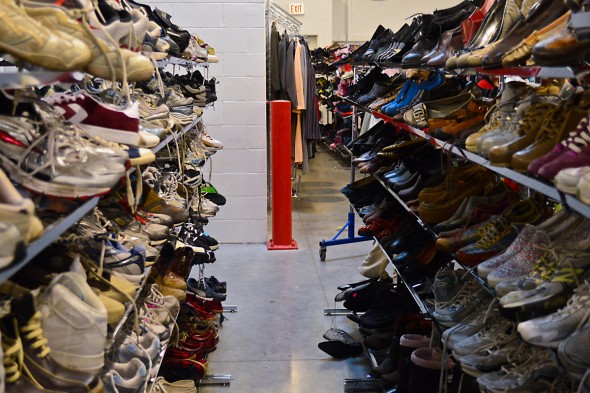Resale shops thrive despite online competition

“‘I got it on eBay’ doesn’t evoke the same air of mystery and treasure hunt as scoring a find in an obscure junk shop in Chicago,” says UIC researcher Brenda Parker. Photo: Alex Rauch
Chicago’s neighborhood secondhand stores thrive, despite competition from eBay and other websites, because their patrons seek “intangible satisfactions,” not just bargains, say two UIC researchers.
“The social and material experience can’t be recaptured when one is alone at home, slouched over the computer, trying to discern the quality of a garment on eBay,” said Brenda Parker, assistant professor of urban planning and policy.
“And ‘I got it on eBay’ does not evoke the same air of mystery and treasure hunt as scoring a find in an obscure junk shop in Chicago.”
Parker and Rachel Weber, associate professor of urban planning and policy, studied the survival strategies of secondhand retailers since the growth of e-commerce. Their findings will be published in an upcoming issue of the academic journal Urban Geography.
They focused on sellers of women’s apparel, finding 187 such stores in Chicago. Most were in census tracts where residents’ incomes are above the city average and shopping districts thrive.
“Thrift stores, vintage boutiques and flea markets are often small, locally owned and idiosyncratic. They add to the unique, vibrant quality of neighborhood retail corridors. Products sold will differ from neighborhood to neighborhood,” Parker said.
Like eBay shoppers, patrons of thrift, consignment and vintage shops seek inexpensive, unusual goods and are interested in a product’s history, the researchers found.
Such shoppers view secondhand shopping as sustainable because they are recycling goods rather than using new resources or exploiting low-wage workers.
Shoppers at brick-and-mortar stores, however, want these advantages in an authentic shopping experience with a neighborhood setting and engaged proprietors.
“The threat of e-commerce is real, particularly in terms of convenience and potentially lower prices,” Weber said.
“But the number of secondhand stores has grown despite the growth of websites for secondhand exchange.”
About 25 percent of secondhand store owners address their online competition by selling online, too — sometimes on e-Bay, the researchers found.
Just as online thrifting does not displace neighborhood thrift shops, it does not seem to displace firsthand retail. Parker and Weber found similar sales growth for new and used merchandise over the past decade.
Weber said the popularity of secondhand shopping may even boost firsthand retail, thus undermining some of the positive social and ecological benefits of thrift shopping.
“Secondhand stores and eBay offer perverse incentives for primary consumption. They may encourage consumers to buy more, knowing they can dispose of merchandise respectably and even for a profit,” she said.
Parker and Weber gathered data by surveying and interviewing retailers, recording their own observations while shopping at stores and online, attending a conference for eBay sellers, and reviewing recent academic literature on retail.
